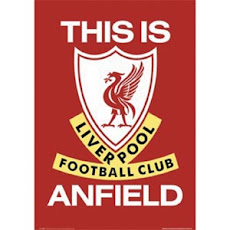This appears in the Monday, September 6, 2010 edition of the Business Mirror.
An Incomplete Match Report
by rick olivares
The official FIFA report on the 2010 World Cup in South Africa, a voluminous 289-page effort, was released several days ago. It’s hardly the paperback novel-type of reading as the report contains dozens of gorgeous pictures of the action but what pads it are the Spanish, French, and German translations that follow the sections written in English.
Still, like the just-concluded tournament, it’s interesting if not controversial.
The World Cup in South Africa wasn’t even over when changes in many a national team were already taking place. One even happened right before France played its first game and that was when it was announced that former national player Laurent Blanc would be taking over from the embattled Raymond Domenech after the tournament. And no one is ever going to second guess that because given the embarrassing show put on by the French in South Africa, wholesale change is needed.
When Blanc has to provide his players with lyric sheets of Le Marseillaise because they do not know the lyrics to the French national anthem then you know something isn’t just wrong with their educational system but also in the composition of their national squads.
On the point of nationalism, the report lauds several Asian teams for picking a homegrown coach then points out that five of the six African teams hired foreign coaches who were either brought on board on short notice.
Any such conclusion hardly begins to tell the story. In fact, when discussing homegrown national coaches, one has to view it from a socio-economic context. The Asian countries that participated (let’s exclude North Korea here) are more or less progressive countries while the African countries are considered developing nations that have subpar leagues hence their players’ choice to play elsewhere.
Europe is still obviously the best fertile ground for exposure to top-quality football as England supplied 113 players to the World Cup. Germany with 85, Italy with 81, Spain with 55, France followed that with 47, and Holland with 33. To be more specific 418 athletes that saw action in South Africa play club football in Europe while 147 suited up elsewhere in the world.
One reason for the success of Japan and South Korea is the coaches’ education seminars and the solid job done by their local football federations. Lucky for them because here domestically, the money earmarked for a national tournament and other matters is used for wining and dining as well as grocery money by its fat and opulent football officials.
Another issue is the staggering number of top-flight competitions in the same year as the World Cup. Aside from the domestic leagues and their various cups, there was this year’s UEFA the Champions League and Africa Cup of Nations.
In the section on “Mental and Physical Fitness,” the report wonders is the players were fresh for the World Cup. “Did those players who had been playing in domestic league championships and continental competitions have enough time to recover and prepare for the World Cup? In contrast, players who are usually substitutes at their clubs were able to show their ability and shine at this tournament.”
The report also stated, “The difficulty resides in keeping players motivated and fit for two such major competitions. Two tournaments of this stature within six months of each other imposes an extreme mental burden on the players, particularly due to the great pressure to perform to which the players are also exposed at their clubs.”
Wasn’t that obvious in previous staging of football’s premier event? We always see this every other World Cup but nothing has been done. The sheer number of players in the European leagues increases the probability of burnout and injury. Maybe the domestic leagues would do well to shorten the seasons during a World Cup year.
The report fails to expound on certain matters while it completely skirts over or ignores others.
Case in point: when a country bids for the rights to host the competition, some factors to consider is security and public transportation. The theft of personal belongings of Greek and English teams are just a couple of incidents that were reported in the media yet it was never addressed in the official FIFA report. How about public transportation such as the airport logjams that caused problems? Was this a figment of peoples’ imaginations?
If such matters are trivial and left out then could there possibly be convenient oversights in other matters such as game recaps and the grades on officiating?
The FIFA report enumerates the top performers yet in the mistakes, they fail to be explicit. By not mentioning them and giving match officials an “excellent” rating, then I wonder if “change” is purely lip service.
During the match between Argentina and Mexico where Argentinean Carlos Tevez scored despite blatantly being offside, television operators replayed the controversial play on the widescreen within seconds after the incident. The replay corroborated the Mexicans’ protest but referee Roberto Rosetti and his assistant waved them off. FIFA official Nicolas Maingot said, “A clear mistake. This will be corrected. We will work on this and be a bit more tight on this for the games to be played.”
Incidentally, he wasn’t referring to the blown call but to the in-stadium replay.
There too was American Maurice Edu’s strike against Slovenia that was disallowed by Mali referee Koman Coulibaly that should have given the US a 3-2 win instead of a 2-2 draw. Coulibaly was never lead official after that but the damage had been done.
And there’s the infamous missed goal by Frank Lampard that Uruguayan referee Jorge Larrionda and his assistant failed to see. I’m wondering here… they didn’t count that because they didn’t see it yet in 2006, ref Hector Eliozondo gave Zinedine Zidane a red card for a headbutt he never saw. Not unless he had help from the fourth official who watched the live telecast.
The report states that “of the 145 goals awarded, 142 were correctly given. Furthermore, 13 goals were correctly disallowed for offside (100% accuracy) and two more goals should have been allowed, meaning that 96.88% of the decisions were correct overall.”
There was no mention of even talk by FIFA about taking another look at goal-line technology even if it was available for usage. Yet it’s funny how FIFA feels that they got most of the goal calls right yet when it comes to the yellow and red cards, they only had this to say: “The number of yellow (3.82 per match) and red (0.27 per match) cards was lower than at the 2006 FIFA World Cup in Germany. It is clear that errors – some of them serious – did occur in the hundreds of often very difficult decisions taken over the 64 matches. These errors are neither covered up nor justified but are meticulously analyzed to learn from them and improve future training plans. The challenge is to work towards improvements.”
One of the things I was taught at an early age was admitting to a wrong was the first step to correcting things. This is not to say that the World Cup was terrible or a disaster despite a horrible Finals where the right team won. In FIFA’s report that had its clear misses and oversights, I wonder given their track record of ignoring sensible issues, if they’d have us believe that all is peachy keen and if they are serious about correcting things that are sorely in need of it.










No comments:
Post a Comment